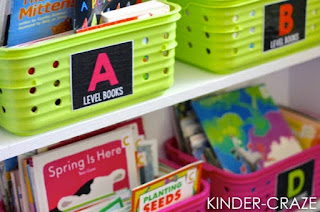**REMEMBER** I will help you set up your classroom libraries. It will take time, so please be patient!
Why will it take so long?
The state of South Carolina is moving to "leveled literacy libraries." This means that the books in your classroom library can definitely be placed by theme/ subject like they have in the past, but you also need to have a space for leveled texts.
You CANNOT "guess" at the levels - this doesn't help anyone.
A blog to help with leveling (apps, etc.) can be found
HERE:
K12 Reader:
This website gives a good synopsis on independent reading, why it's important, and how it can be incorporated. It also gives activities to help with reading comprehension:
This is a chapter out of the book Reading Essentials: The Specifics You Need to Teach Reading Well by Reggie Routman giving you information you need to know for setting up independent reading:
Plan for and Monitor Independent Reading
PowerPoint for choosing "Just Right" books:
BIBLIONASIUM:
This looks really cool. It looks like you can create a class and have the students log what they're reading. The account is free. Try it out!
"BOOK SHOPPING"
Book shopping is having students go to the leveled classroom library once per week to get books to read independently for that week. It is important for the students to understand that they cannot go back to the library other days of the week. Once they have picked out their books, that's it! They have to read them throughout the week. This is a great way to reteach the importance of choosing a book on their level and one that interests them.
Here are some ideas to get you started on setting up book shopping:
This one is a cute poster that can be changed as needed:
This is another way to organize both reading response journals and book shopping:
Here are some cards for students to use to help them shop for books - knowing what to get when they shop:
"BAGGIE BOOKS"
When students go book shopping, they can place their books in individual book bins (like first grade does) or in bags called "baggie books". This is what can be pulled out at any time for the students to read independently. The levels the child has should be on their current tested level or one level above or below the tested level. A student should not have a level Q/40 and a level F/10 in their book baggie. Also, if a student is a level K/20, they should not have a level D/4 in their book baggie.
The students need to understand that they are not to take the books in their baggie books home. They are to stay at school
Independent Reading Organization in the Classroom:
Great organization ideas from a third grade teacher:
READER'S RESPONSE
A very important part of independent reading is a reader's response journal. This not only helps keep track of what the students are reading, but helps show student growth over time and is a great way to take a quick reading grade. Some examples of reading responses for K-2 are found below:
Several different examples:
READO:
TONS of "How To" Videos: Everything from Assessment to Comprehension Strategies. From "The Balanced Literacy Diet"website: (youtube videos)
Independent Reading E-Workshop
This is going to be a topic on here for a while as it is one that can be as extensive as the teacher wants it to be) - Conferencing with students while they are independently reading:
This is a simple yet efficient template you can use to keep track of conferences with developed by a fellow reading coach, Beverly Smith. It can be used to take to your reading coach and discuss the next steps with the students and what assistance the students might need.
Anchor Chart ideas for conferencing:
An E-Workshop for Independent Reading and Conferencing
Bringing exit slips and the Parking Lot into reading time:
What this teacher says on her blog:
Each day I post a question on the board for my students to think about as they read their books. They are responsible for responding to the question on a sticky note, and turning it in on our sticky note poster. This activity allows me to quickly & informally assess their knowledge and understanding in regards to our current lesson. This activity is in addition to their other sticky notes.






















No comments:
Post a Comment